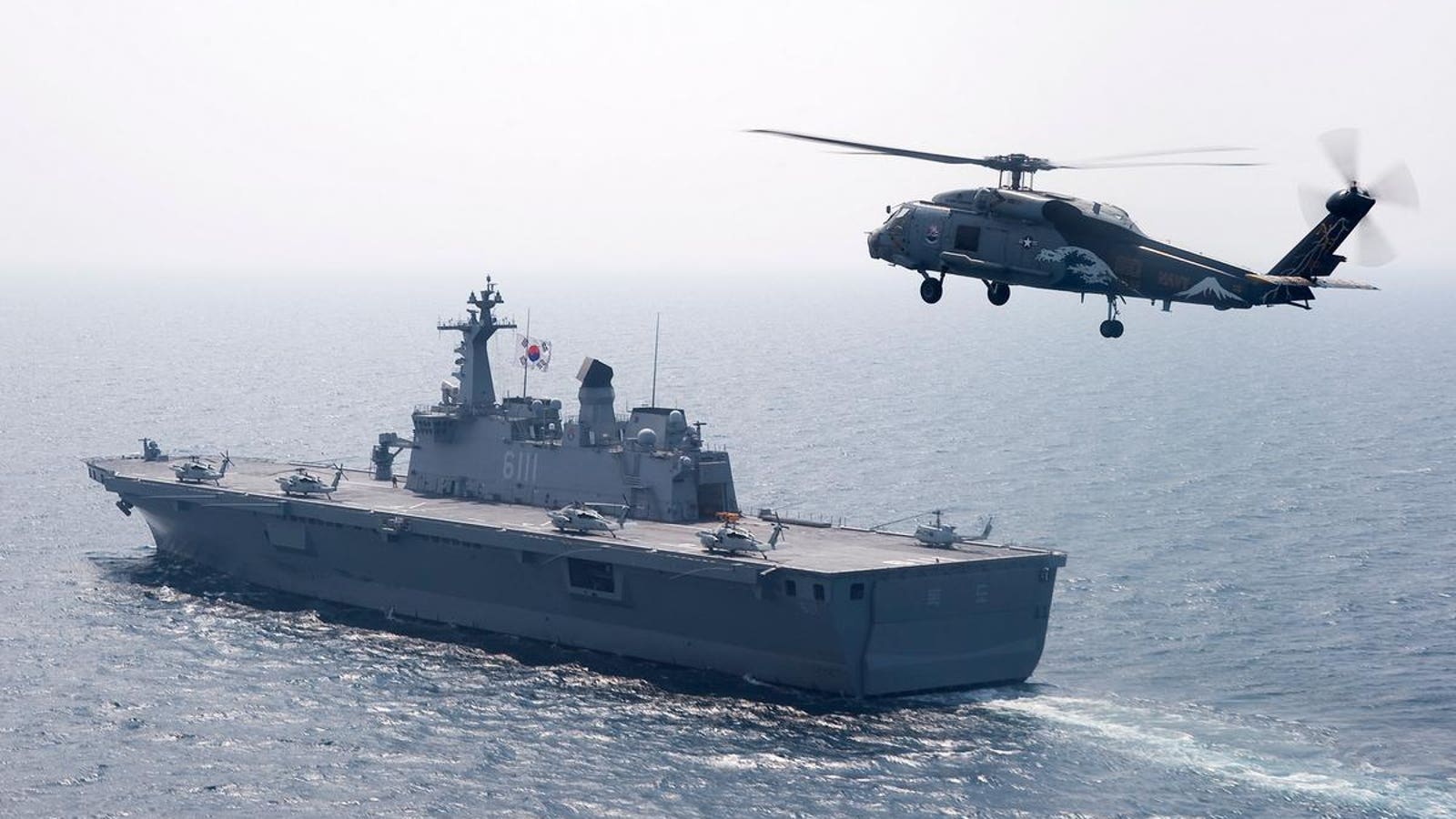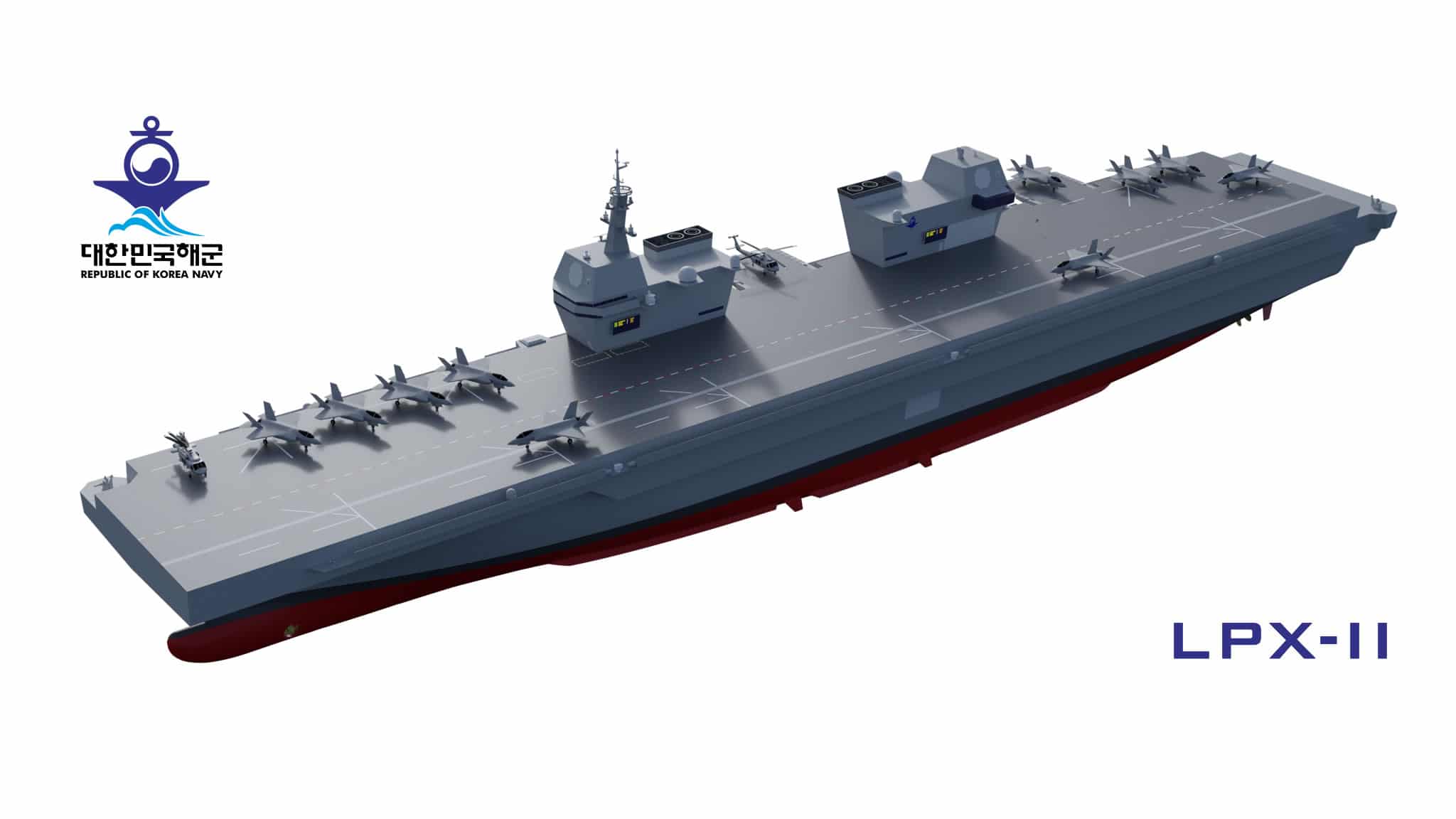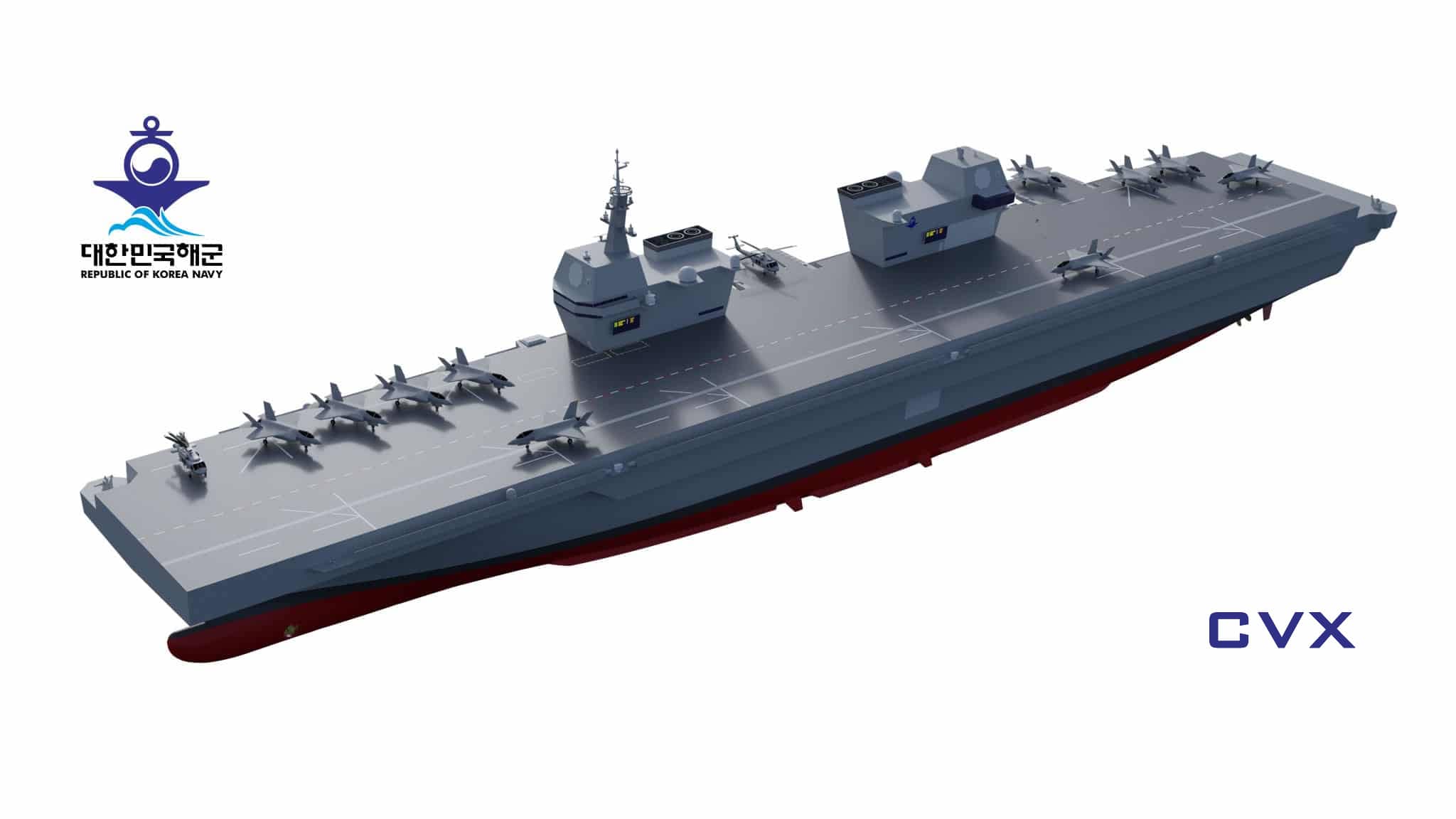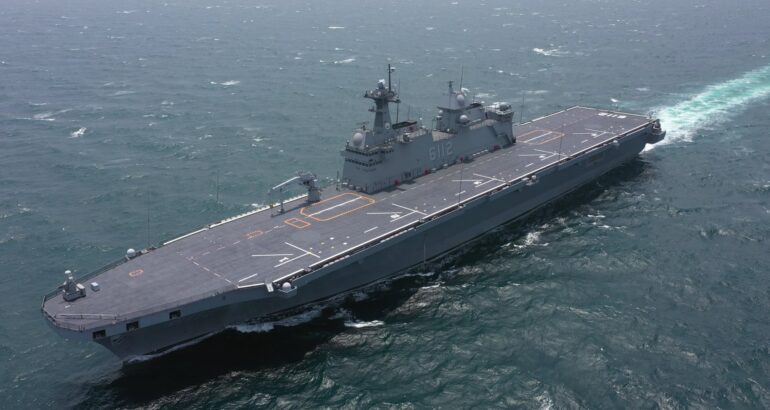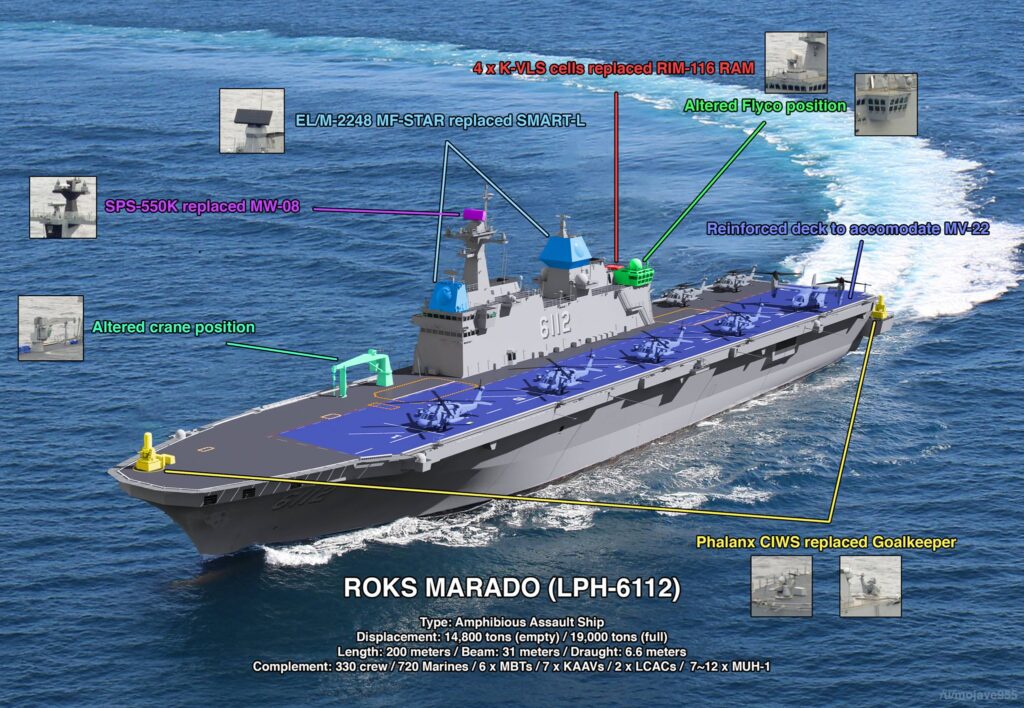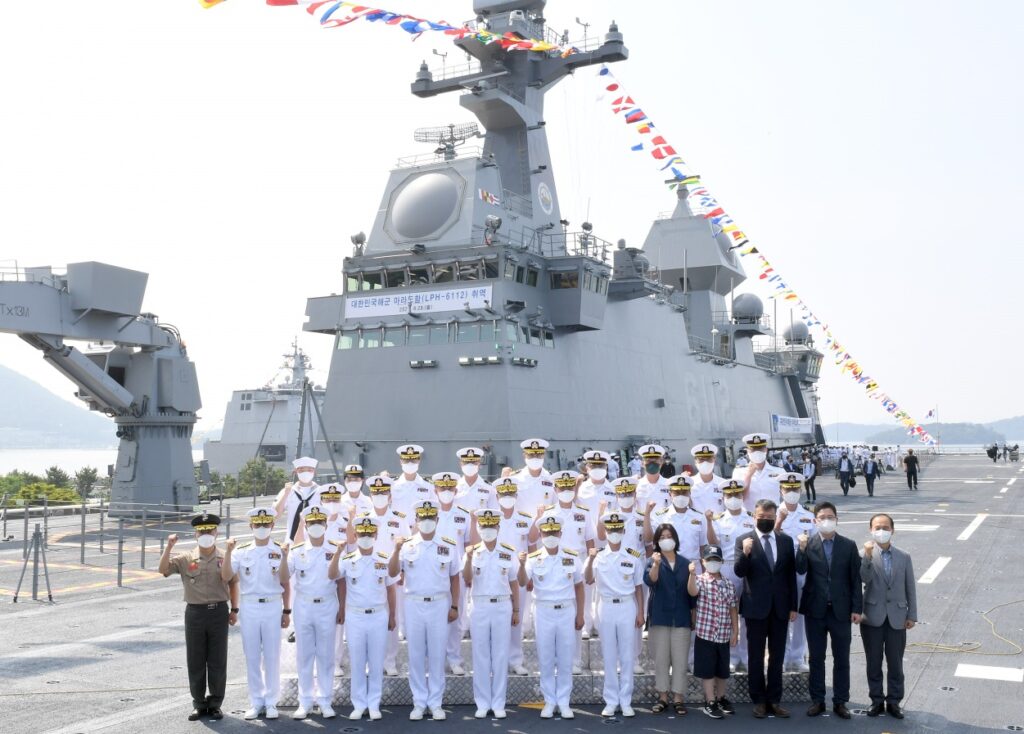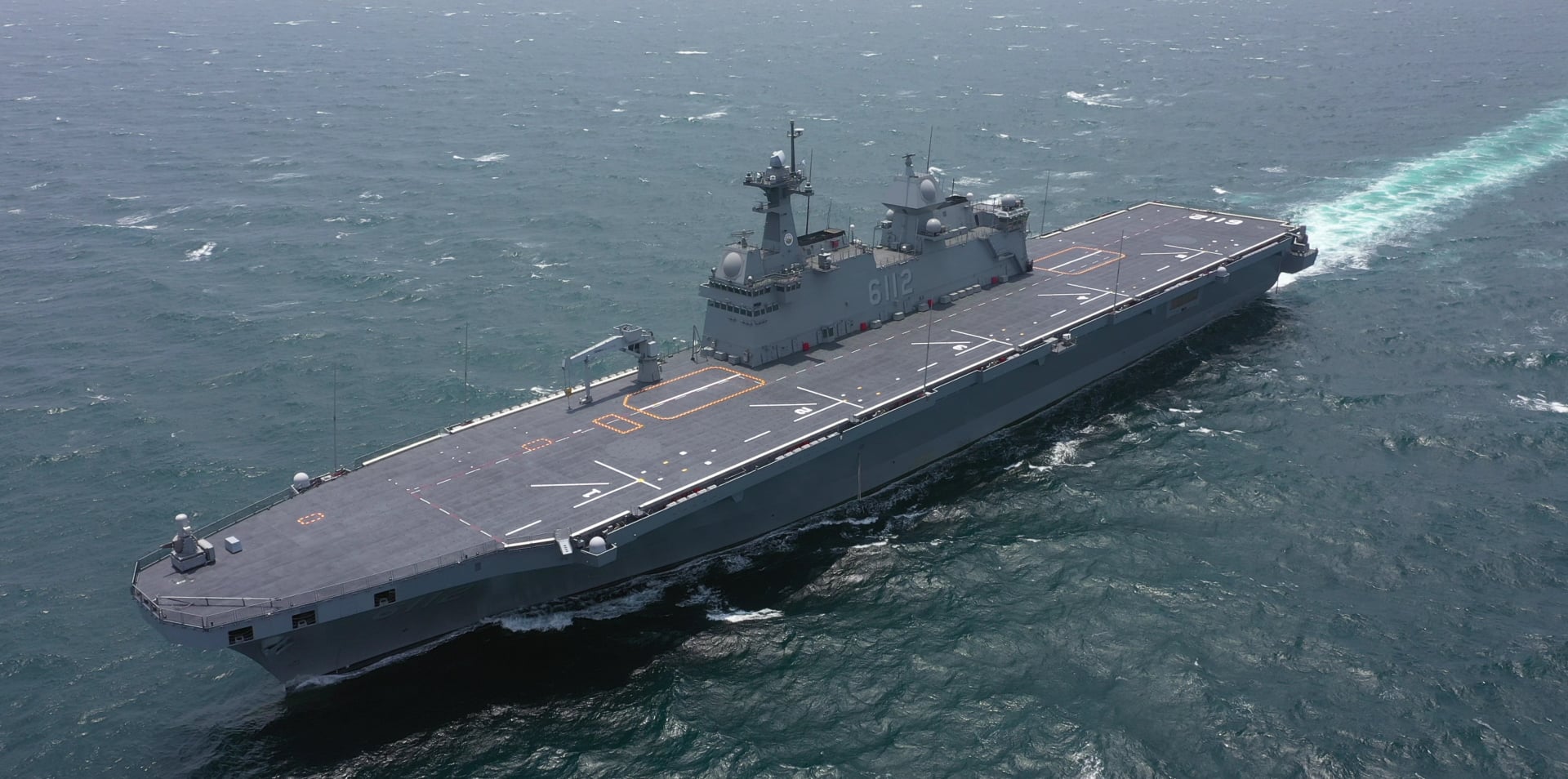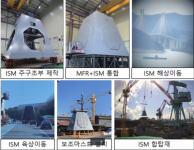Artist impression of CVX, the ROK Navy light aircraft carrier project.
Juho Lee 27 May 2021
Here is everything you need to know about the CVX project ahead of MADEX 2021
The booth for CV eXperimental (CVX), the project name for South Korea’s first aircraft carrier, at the MADEX International Maritime Defense Industry Exhibition this year will constitute 30% of the entire display area, according to
Yonhap News. This decision is not just for pomp and circumstance. The Ministry of National Defense (MND) faces an uphill battle to convince the National Assembly and the public of the usefulness of CVX. Its request of ₩101 billion ($90 million) in funds for research into CVX for the 2021 fiscal year was denied by the National Defense Committee which only allocated ₩1 billion ($890,000) for this purpose.
The resistance may be hard to understand at first. Many nations consider aircraft carriers to be a point of pride, a symbol of their great power status. South Korea, however, faces very immediate security challenges, and many question whether an aircraft carrier, let alone a
light aircraft carrier, can meet those challenges.
CVX history, dimensions, and capabilities
Concept image of ROK Navy’s future LPX-II displayed on HHI stand during MADEX 2019
The CVX program evolved from the Landing Platform eXperimental (LPX) program which produced the largest ships operated by the Republic of Korea Navy (ROKN) so far, the Dokdo class amphibious assault ships. Preliminary plans, dubbed LPX-II, envisioned an amphibious assault ship like vessel that would also be capable of operating fighter aircraft. However, in Aug. 2020, the ROKN officially announced plans to acquire a
fully-fledged aircraft carrier and the term CVX was introduced in Feb. 2021. The ROKN hopes CVX will be ready for operations by 2033.
The CVX is expected to cost ₩2.3 trillion ($2 billion) to construct and around ₩50 billion ($45 million) per year to maintain. It will be 265 m in length, 43 m in width and have a light and maximum displacement of around 30,000 tons and 40,000 tons respectively. The ship will be capable of operating 16 F-35B fighters as well as eight helicopters. It will also feature a high degree of automation and have a complement of 440 crew, excluding the air element. The carrier will have two islands, similar to the Royal Navy’s Queen Elizabeth (QE) class, but lacks a ski-jump.
CVX will be equipped with the AESA radar being designed by Hanwha for the
“integrated mast” on the KDDX destroyer. The S band radar will have a range of 300 km for long range detection of aircraft, while the X band radar will be used for short range detection. The carrier will also feature LIG Nex1’s torpedo acoustic countermeasure, Haegung (K-SAAM) surface to air missile system, and close in weapon systems (CIWS) for point defence.
ROK Navy’s vision for CVX
ROK Navy artist impression show the future CSG around CVX
The CVX will be the flagship of the ROKN and will be the centerpiece of its blue-water fleet. The ROKN expects the ship to protect South Korea’s lines of communications, provide deterrence against North Korea, and aid humanitarian relief operations. The CVX is also a response to Korea’s great power neighbors; both China and Japan plan on acquiring multiple aircraft carriers. It is hoped that CVX will deter both powers.
Moreover, the CVX will also be capable of serving as a landing helicopter dock, deploying forces ashore during landing operations. It will augment South Korea’s amphibious assault fleet which consists of two Dokdo class amphibious assault ships, four Go Jun Bong class LSTs, and four Cheon Wang Bong class LSTs.
Some even speculate that CVX will serve as a stepping stone for a larger carrier in the future. It is hoped that once the ROKN has gained enough operational experience from operating the CVX, it will become capable of operating supercarriers.
Lastly, proponents of the program claim that CVX will provide South Korea with a conventional second strike capability. They claim that Korean airfields are vulnerable to a first strike by North Korean forces; for them the nightmare scenario is a barrage of missiles crippling the entire Republic of Korea Air Force (ROKAF) before its fighters can even take-off. Operating the F-35B from CVX would preclude this possibility.
Criticism
No defence procurement program has generated as much controversy domestically in recent years as the CVX program. Dissenting voices from the National Assembly, academia, and the rest of civil society at large have lambasted the program as a waste of resources.
Does South Korea need an aircraft carrier?
The first group of critics cast doubt on whether South Korea needs an aircraft carrier at all. Hong Joon-pyo, a veteran member of the National Assembly who is currently on the National Defence Committee, is a vocal proponent of the first view. He is quoted as saying
“all a physically small country, like ours, needs is land based airfields. Our money would be better spent on building nuclear submarines instead,” to the National Defence Committee last November.
Many in academia support this claim. The crux of the argument is that an aircraft carrier is “overkill” when it comes to dealing with North Korea, but not sufficient to counter the fleets of neighboring great powers. Critics claim that the threat of a neutralizing first strike on South Korean airfields by North Korea is exaggerated and that a single aircraft carrier would not be enough to deter China or Japan which plans on building multiple aircraft carriers. Operating nuclear-powered attack submarines (SSNs), on the other hand, would allow constant shadowing of
North Korean ballistic missile submarines (SSB) currently in development, as well as providing a strong undersea deterrent against aggression from other neighbors.
Critics also claim that investing in submarines is the more rational choice given the geography of the Korean peninsula which is surrounded by thousands of small islands. According to them, South Korea does not have any overseas territories and, thus, does not need to project power far from its shores.
Some worried that the acquisition of CVX and the 20 F-35Bs that would operate from the ship would interfere with ROKAF’s acquisition of F-35As. The ROKAF had purchased 40 F-35As and planned to procure an additional 20 aircraft of the same type.
These fears were attenuated when the MND announced that ROKAF plans would not be affected. According to Joongang Ilbo, the ROKAF will operate both the F-35A and F-35B for a total of 80 aircraft, similar to how the Royal Air Force operates aircraft from Royal Navy carriers. This view was echoed by a ROKN spokesperson on April 21. However, critics still point out that the procurement of the second batch of F-35As may be delayed due to the priority given to F-35B acquisition.
CATOBAR vs STOVL?
The second group of critics acknowledges the utility of aircraft carriers, but demands the procurement of one capable of catapult assisted take-off but arrested recovery (CATOBAR). They claim that the current design, which is tailored for short take-off and vertical landing (STOVL), limits the CVX’s capabilities.
To begin with, the F-35B cannot carry the 2000 lb joint direct attack ammunition internally due to its smaller internal weapons bay. This means the ship will not be able to target hardened North Korean bunkers and missile silos if conflict breaks out. A CATOBAR carrier would allow for the operation of the F-35C which has a greater internal payload and greater range.
A STOVL carrier would also not be able to operate fixed-wing early warning aircraft, such as the E-2D Hawkeye. This worries critics who claim that better situational awareness will be paramount if South Korean forces are to overcome the numerical superiority of neighbouring great powers in a potential conflict. They claim that without it, CVX would be a veritable sitting duck against larger and more numerous Chinese and Japanese carriers. The situation is made worse by the fact that the ROKN does not yet even plan to operate early warning helicopters from its CVX.
Lastly, operating the F-35B on a light aircraft carrier is very inefficient. The F-35B needs to jettison much of its payload before it can land vertically. To counter this, the Royal Navy developed the shipborne rolling vertical landing (SRVL) technique which allows the F-35B to land with its payload. However, SRVL technique needs an 80 meters long runway to be performed safely. Critics claim this will make it difficult for the CVX to simultaneously launch and recover aircraft, lowering sortie rates significantly.
Despite this backlash, the MND remains determined to carry on with the project. It has launched a fierce hearts and minds campaign to convince the public of the utility of CVX. However, many still remain doubtful. Whether the MND will alter CVX’s design to appease critics remains to be seen.
British involvement in CVX ?
According to reports by British media, Babcok Marine, BAE systems, and Thales have already begun to reach out to South Korean companies regarding cooperation on CVX. Moreover, some speculate HMS Queen Elizabeth’s port visit to Busan in the second half of 2021 will serve as an overture from Britain regarding cooperation on CVX, according to Yonhap news.
“There is a possibility Britain will share knowledge and operational experience regarding carrier operations when its fleet visits Busan,” a South Korean MND spokesperson said on April 27.
One possible area of cooperation is heat-resistant materials, which will be especially important for operating the F-35B. The ROKN has little expertise in this regard given that neither of its Dokdo class ships are capable of operating fixed-wing aircraft.
In addition to this, some hope that British experience with early-warning helicopters will help the ROKN develop its own operational doctrine that utilizes maritime early-warning aircraft. Critics still point out, however, that early-warning helicopters are less effective then fixed wing aircraft.
Korean Aerospace Industries (KAI) KF-21 for the CVX?
KAI revealed that it is aiming to start development of a navalized variant of the KF-21 in 2033 as part of the KF-21 block 2 development program on April 2. The MND is also keeping all options on the table for now.
“There is a possibility that a domestically designed fighter will operate from the light aircraft carrier if it can meet required operational capabilities, and if the necessary technology and production facilities are secured before the aircraft carrier is completed,” said a ministry spokesperson on April 21.
At this point, it is unclear what a navalized KF-21 will look like and how it will operate. Some speculate that KAI is developing a STOVL variant of the KF-21. This would require a major redesign of the airframe and is likely to be extremely expensive. Others think that KAI is aiming to design a short take-off but arrested recovery (STOBAR) variant. This would require fewer changes to the airframe; resistance to saltwater, stronger landing gear, a landing hook, and larger wings are some new features that may have to be added.
However, the carrier in its current configuration is not suitable for STOBAR operations. According to Konkuk University Professor, Lee Jaewoo, the flight deck will have to be lengthened by around 20 m for STOBAR operations to become feasible. Moreover, the ship will have to be capable of maintaining a speed of 30 knots, much higher than the maximum speed of the Dokdo class which is 23 knots.
In addition to this, doubts linger as to whether these plans will be affordable.
“A large budget will be required if a new navalized domestic fighter is to be developed,” said an MND spokesperson on April 21. The ROKN is already cash strapped as it pursues other expensive programs, such as the 6,000 ton arsenal ship, and may not be able to secure funds for such an ambitious change.
The booth for CV eXperimental (CVX), the project name for South Korea’s first aircraft carrier, at the MADEX International Maritime Defense Industry Exhibition this year will constitute 30% of the entire display area, according to Yonhap News. This decision is not just for pomp and circumstance...

www.navalnews.com
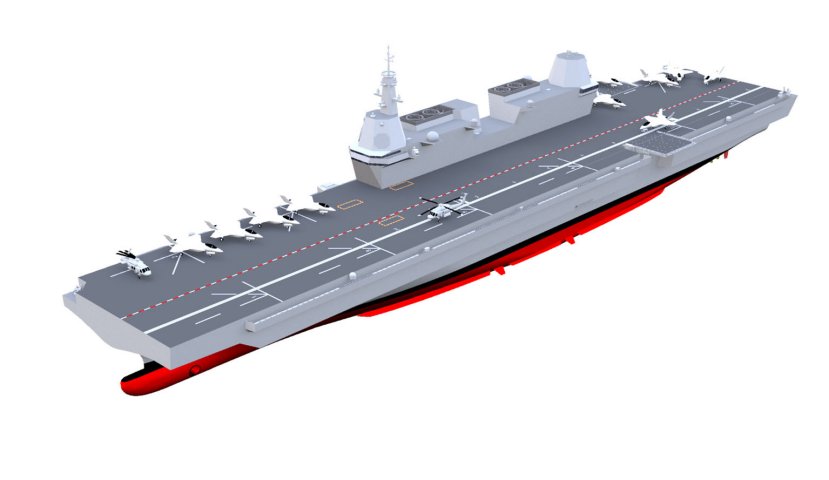
 www.janes.com
www.janes.com











